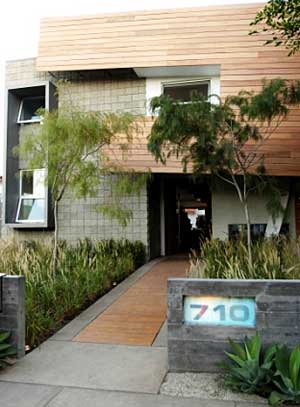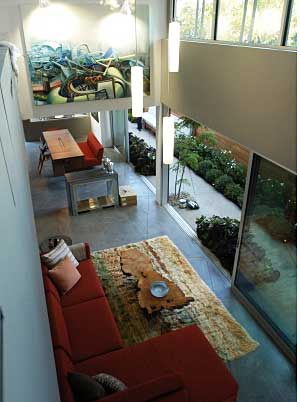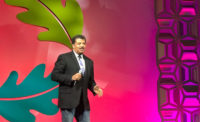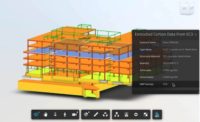The U.S. Green Building Council (USGBC) is set to launch its LEED-for-Homes program at the organization’s annual Greenbuild conference in Chicago next week. A nearly two-year pilot program to adapt the LEED rating system to residential building ended this spring, but USGBC waited until Greenbuild for its official debut so that the program could be balloted with the organization’s full membership.


Among the 12 houses nationwide that have achieved a Platinum rating in the USGBC’s Leed-for-Homes program is project7ten, in Venice, California. Designed by Melinda Gray, of Santa Monica-based Gray Matter Architecture, it uses solar panels, high-performance windows and insulation, and recycled and renewable materials.
Housing represents a significant new market sector for USGBC—and, despite the current construction slow down, one in which it believes that urgent action is needed. The group estimates that residential buildings contribute 21 percent of the nation’s carbon dioxide emissions. McGraw-Hill SmartMarket reports that only 2 percent of American houses are built green; there were more than 1.8 million new single-family construction starts in 2006, according to the U.S. Census Bureau. LEED-for-Homes provides a framework for homeowners and developers who want to improve that ratio.
There are already encouraging signs that the program will do just that. Some 336 houses have earned LEED certification since USGBC began piloting the residential ratings program in August 2005, and 8,000 more are in the pipeline. “Obviously the growth is wonderful,” says Emily Mitchell, the LEED-for-Homes assistant program manager. “The numbers have exceeded our expectations. With projects in Idaho, Wisconsin, Colorado, and Michigan, it has reached a broad audience thus far.”
The large numbers come, in part, from the diversity of projects covered by the program, including mass-production houses, custom-built residences, and low-rise multi-family buildings. In one of the largest developments, the Grupe Company built more than 60 single-family houses in Rocklin, California, that qualify for basic LEED certification.
Twelve houses so far have achieved LEED Platinum, the highest ranking. A residence in Venice, California, known as project7ten recently joined their ranks. Its California Modernist design, by Melinda Gray of Santa Monica-based Gray Matter Architecture, is a noticeable presence without being overt. It uses solar panels, high-performance windows and insulation, and recycled and renewable materials—including concrete and wood recycled from an older house that it replaced on the same lot. Project7ten was featured in the “Enlightened Development” exhibition at Los Angeles’s Architecture and Design Museum and is currently open for tours before its developer, Tom Schey, puts it on the market.
Created exclusively for new commercial construction when it was launched in 2000, LEED in recent years has taken on more building-type-specific programs to broaden its influence. There are now seven programs beyond the original new construction category: commercial interiors, core-and-shell, schools, and existing buildings. LEED for neighborhood development and retail are in their pilot phases, and USGBC expects to roll out its next pilot program, LEED-Healthcare, in 2008.





Post a comment to this article
Report Abusive Comment